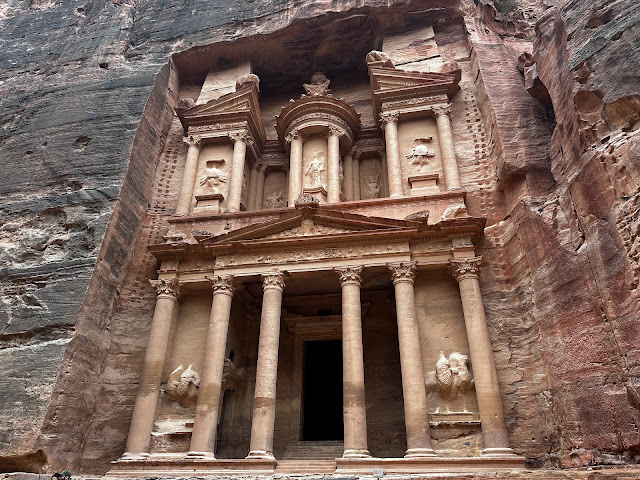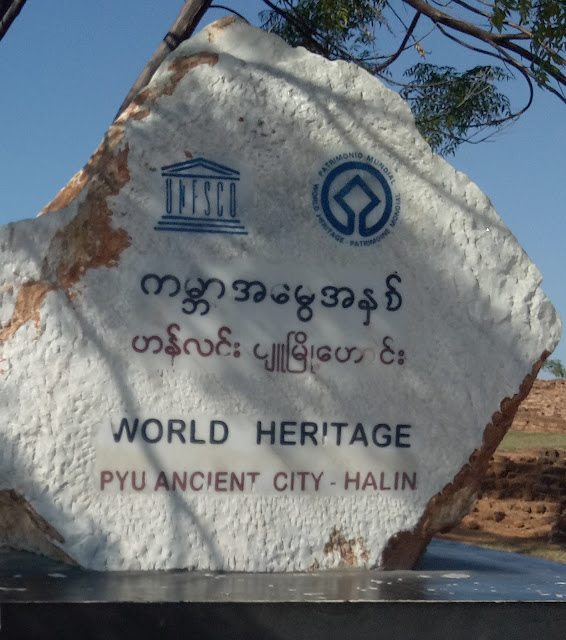Borobudur Temple Compounds of Central Java in Indonesia
Borobudur Temple Compounds comprise of three Buddhist temples situated in the central region of the Indonesian Island of Java. The three temples: namely Borobudur, Mendut and Pawon which fall on an approximate straight line were constructed during the reign of the Sailendra Dynasty around the 8th and 9th Century CE.
Borobudur Temple (Candi Borobudur)
Borobudur temple is the most prominent of the three temples. Constructed during 9th Century CE dedicated to Mahayana Buddhism; Borobudur is the largest Buddhist temple in the world. Archaeological excavations during the restoration of Borobudur has suggested that there was already a religious structure under construction or fully constructed at the site, prior to the construction of the monument visible today. Given that the foundation of the temple is unlike any other Hindu or Buddhist temple structure identified around the world, there are suggestions that the initial structure may have been constructed in indigenous Javanese style. Though there are no known records of the construction or the purpose of Borobudur, it has been estimated that the construction itself may have taken approximately 75 years. It is believed that the constructed was finally completed in 825 CE during the reign of Samaratungga: the head of the Sailendra Dynasty and monarch of the both the Medang Kingdom in Central Java and Srivijaya Kingdom of Sumatra from 812 CE to 833 CE.
 |
| Candi Borobudur from a distance |
The unique structure of Borobudur takes the form of a stepped pyramid. The original foundation of the structure is a square, with approximately 118 meters (387 feet) on each side. The temple has nine platforms. The six lower platforms are square in shape and the three top platform are circular.
 |
| A closer look at the stepped pyramid-like structure of Candi Borobudur |
The nine platforms of Borobudur represent the three realms of Buddhist cosmology: Kamadhatu, Rupadhatu and Arupadhatu.
The base or the lowest level of the nine platforms represents the realm of Kamadhatu: the world of desires. According to Buddhist cosmology, ordinary beings who are attached to the materialistic world through their desires live out their lives on this level. The Realm consists of the domains of “Deva” (god), “Asura” (demigod), “Manussa” (human), “Tiryagyoni” (animal), “Preta” (hungry ghost) and “Naraka” (hell) which makes up what is commonly known as the “Bhavachakra” or "Wheel of Life".
The next five levels represent realm of Rupadhatu: the world of forms (first realm above our physical world). This is where those who have successfully detached from desire for continued existence, live as per Buddhist cosmology. Beings of this realm do not experience desire or the extremes of pleasure of pain those who live in the physical world experience.
The five square platforms representing the realm of Rupadhatu has been extensively decorated with bas reliefs. These includes depictions of the daily life of Java in the 8th and 9th Century CE as wells as stories such as “Lailtavistara” (birth of Prince Siddhartha), “Jataka” (Buddha's previous life) and “Gandavyuha Sutra” (Sudhana's search for the ultimate truth).
 |
| A view of the square platforms depicting the realm of Rupadhatu |
The five levels which represent the realm of Rupadhatu at Borobudur contained a total of 432 niches where Buddha statues were placed, though not all such statues remain. The number of statues decreased progressively by each platform: with the first of the five platforms having contained 104, the second 104, the third 88, the fourth 72 and the last 64.
 |
| Some of the Buddha statues are no longer sheltered by their original niches whereas there are other niches which no longer house the Buddha statues they once sheltered |
The Buddha statues visible at the five square platforms representing the realm of Rupadhatu demonstrate the Mudras of: “Bhumisparsa”, “Vara”, “Dhyana”, “Abhaya” and “Vitarka”.
 |
| A Buddha statue which is no longer sheltered by the original niche, demonstrating the "Dhyana" Mudra |
The upper three levels represent the realm of Arupadhatu: the formless world. In Buddhist cosmology, this is the highest realm of existence and the final stage before the state of “Nirvana” (the state at which liberation from repeated rebirth is achieved).
 |
| The smaller perforated stupas located on the circular platforms representing the realm of Arupadhatu |
The main stupa of Borobudur is at the center of the 16 smaller perforated stupas on the topmost platform. The body of the main stupa is not however perforated and remains empty.
 |
| The main stupa of Candi Borobudur at the center surrounded by smaller perforated stupas |
Mendut Temple (Candi Mendut)
Mendut Temple is the oldest of the three Borobudur temple compounds. It is believed to have been built during the reign of King Indra (Reigned from 775 CE- 800 CE) of the Sailendra dynasty.
 |
| Candi Mendut |
The base of the temple is square, and the outer walls of the temple have been decorated with bas reliefs of Buddhist figures including “Boddhisattvas”. The main room of the temple has three large stone statues. The statue at the center represents the “Dhyani Buddha Vairocana” whereas the left statue and right statue represent the Boddhisattvas “Avalokitesvara” and "Vajrapāni“.
 |
| The statue of “Dhyani Buddha Vairocana” at Candi Mendut |
 |
| The statue of Boddhisattva "Avalokitesvara” at Candi Mendut |
 |
| The statue of Boddhisattva “"Vajrapāni“ at Candi Mendut |
Pawon Temple (Candi Pawon)
Pawon temple is located between Borobudur and Mendut temples. Its’ construction has been attributed to the 8th or 9th Century CE, during the reign of Sailendra Dynasty. Though the exact ruler who commissioned the construction is unknown, there are suggestions that the temple was built as a tomb to hold the dust of a cremated monarch.
 |
| Candi Pawon |
Smaller in size in comparison to Borobudur and Mendut, the outer walls of the temple has been decorated with reliefs of "Boddhisattvas" and "Taras", whereas the square chamber inside is empty with a square basin at the center of it. The roof of the temple contains five small stupas.
World Heritage Status
In 1991 CE, during the 15th session of the World Heritage Committee, the three temples were inscribed as world heritage sites by the United Nations Educational, Scientific and Cultural Organization (UNESCO) under the designation “Borobudur Temple Compounds”. Though the religious significance of the temples no longer remain the same with in decline in Buddhism, they still carry a significant historical, archaeological and cultural significance for both the island of Java as well as Indonesia as a whole.



Comments
Post a Comment